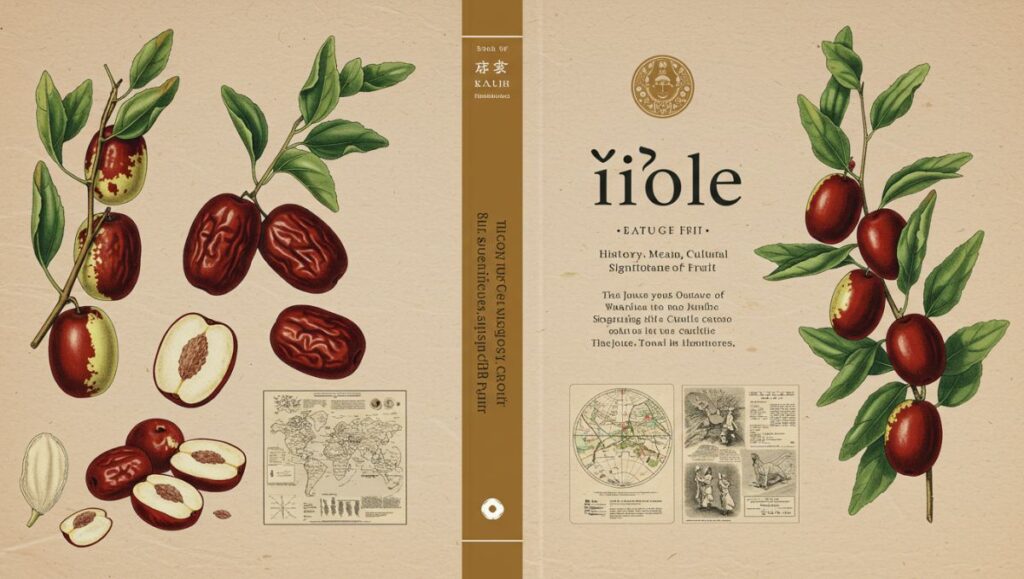Among the many treasures of Mediterranean and Eastern European culture, the žižole holds a special place. Known in English as the jujube fruit, this small, sweet delicacy carries centuries of tradition, symbolism, and culinary value.
From family gardens in Dalmatia to herbal remedies in Asia, the žižole is more than just a fruit — it represents heritage, healing, and connection to the land. In this article, we will explore the meaning of žižole, its cultural roots, health benefits, and its evolving role in modern food culture.
What Are Žižole?
The term žižole refers to the jujube fruit, a small reddish-brown drupe with a date-like taste. Scientifically known as Ziziphus jujuba, the fruit thrives in warm climates and has been cultivated for thousands of years.
In Croatian regions such as Dalmatia, žižole are a familiar autumn fruit, often enjoyed fresh, dried, or preserved. The tree itself is hardy and resilient, symbolizing longevity and nourishment.
Cultural Significance in Dalmatia and Beyond
In the Adriatic region, particularly on the Dalmatian coast, žižole have long been a part of rural traditions. Families planted trees in gardens not only for their fruit but also as a symbol of abundance and resilience.
Throughout history, the fruit has appeared in:
-
Local Festivals – celebrating the autumn harvest.
-
Traditional Medicine – used for soothing remedies and natural tonics.
-
Family Traditions – often offered as a sweet treat during gatherings.
For many, žižole are more than food — they are a reminder of ancestral ties and Mediterranean heritage.
Nutritional and Health Benefits of Žižole
Beyond cultural value, žižole are rich in nutrients that make them a powerful health food. Some of their key benefits include:
-
Rich in Vitamin C – boosting immunity and skin health.
-
Antioxidants – protecting cells from oxidative stress.
-
Natural Sedative Properties – traditionally used to calm the mind and improve sleep.
-
Digestive Aid – supporting gut health through fiber.
In both Eastern and European traditions, žižole have long been considered a healing fruit, valued as much for wellness as for taste.
Culinary Uses of Žižole
The versatility of žižole makes them a culinary gem. In traditional and modern cooking, they can be enjoyed in multiple forms:
-
Fresh Fruit – crisp and apple-like when unripe, sweet when fully matured.
-
Dried Snacks – chewy, date-like texture with concentrated sweetness.
-
Herbal Teas – steeped for calming and immune-boosting effects.
-
Preserves and Syrups – common in Mediterranean kitchens.
-
Infused Spirits – homemade liqueurs using žižole fruit.
This variety ensures that žižole remain a staple in traditional households and gourmet kitchens alike.
Symbolism of Žižole
Like many ancient fruits, the žižole carries rich symbolic meaning:
-
Longevity and Vitality – the hardy tree and nutrient-rich fruit symbolize strength.
-
Balance and Harmony – used in traditional remedies for calming energy.
-
Hospitality and Abundance – often shared during family and community celebrations.
This symbolism enhances its cultural importance, transforming it from a fruit into a symbol of wellbeing and connection.
Žižole in Modern Culture
In recent years, interest in traditional and “forgotten” foods has grown, and ži-žole are experiencing a quiet revival. Today, they are embraced in:
-
Organic Food Markets – valued for natural health properties.
-
Gourmet Cuisine – chefs experimenting with old-world ingredients.
-
Herbal Wellness Products – teas, supplements, and oils.
-
Cultural Tourism – visitors to Dalmatia enjoy local žižole tastings.
This renewed popularity positions ži-žole as a bridge between heritage and modern health trends.
Growing and Preserving Žižole
For gardeners and small farmers, ži-žole are an appealing crop:
-
Resilient Growth – tolerant of dry, rocky soil.
-
Low Maintenance – requiring minimal care once established.
-
High Yield – producing abundant fruit each autumn.
Preservation methods such as drying, making jams, or fermenting ensure that ži-žole can be enjoyed long after harvest.
Challenges and Opportunities for Žižole
While the fruit is beloved in certain regions, there are challenges to expanding its global recognition.
Challenges
-
Limited Awareness – many outside Mediterranean or Asian cultures are unfamiliar with it.
-
Small-Scale Production – not widely cultivated for export.
-
Identity Overlap – known by many names (jujube, red date, ži-žole), which can confuse consumers.
Opportunities
-
Health Food Trends – natural, nutrient-rich fruits are in high demand.
-
Cultural Branding – could be marketed as a “heritage superfruit.”
-
Global Cuisine – offers unique flavors for chefs and product developers.
The Future of Žižole
As the world increasingly values authentic, nutrient-rich, and culturally rooted foods, ži-žole have great potential to reemerge as a global favorite. Whether through health supplements, culinary innovation, or cultural tourism, they are positioned to thrive in a world seeking both wellness and tradition.
Conclusion
The story of žižole is one of tradition, health, and cultural richness. From Dalmatian gardens to Asian herbal medicine, the fruit has nourished generations both physically and symbolically.
Today, as consumers rediscover heritage foods, ži-žole represent more than a fruit — they embody longevity, wellness, and the blending of old and new worlds. With its unique flavor, health benefits, and cultural weight, ž-ižole deserves its place among the world’s most treasured natural foods.






